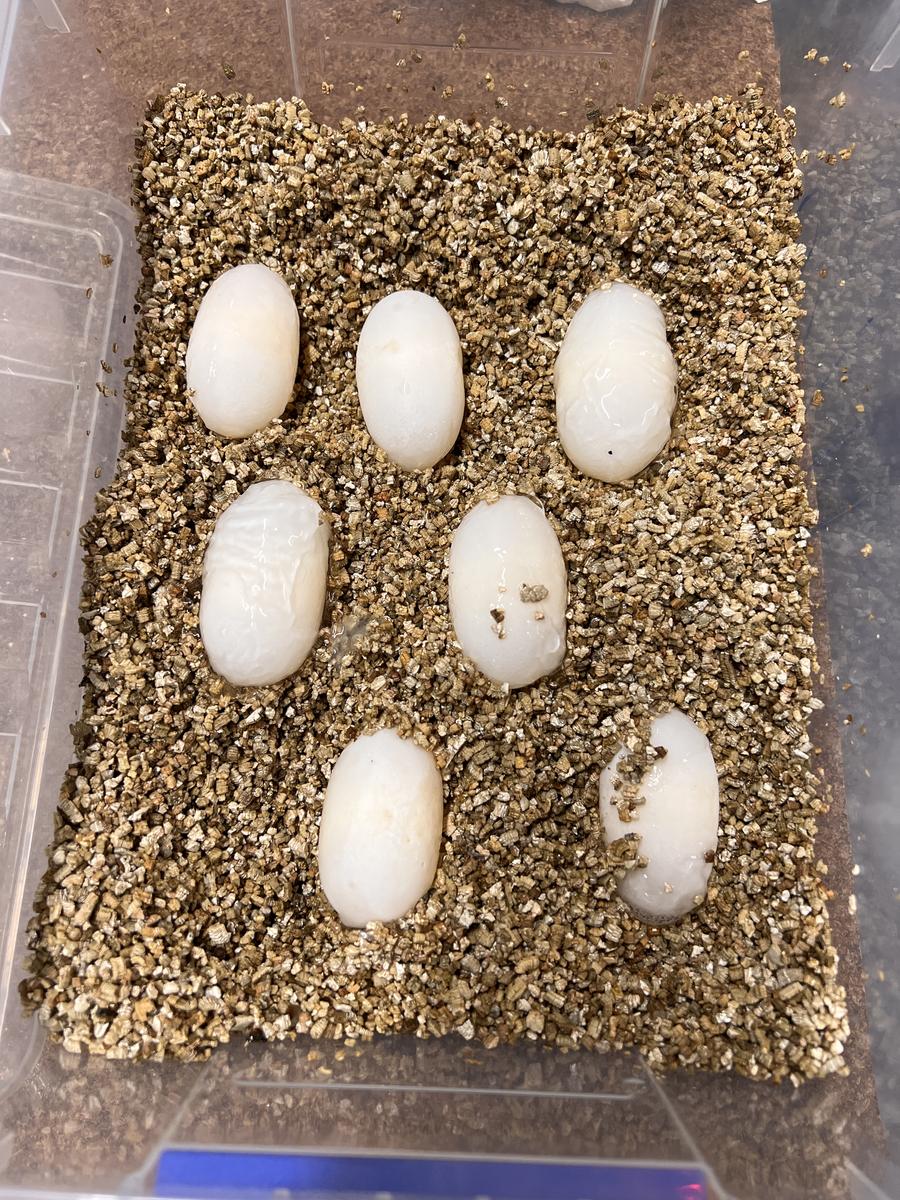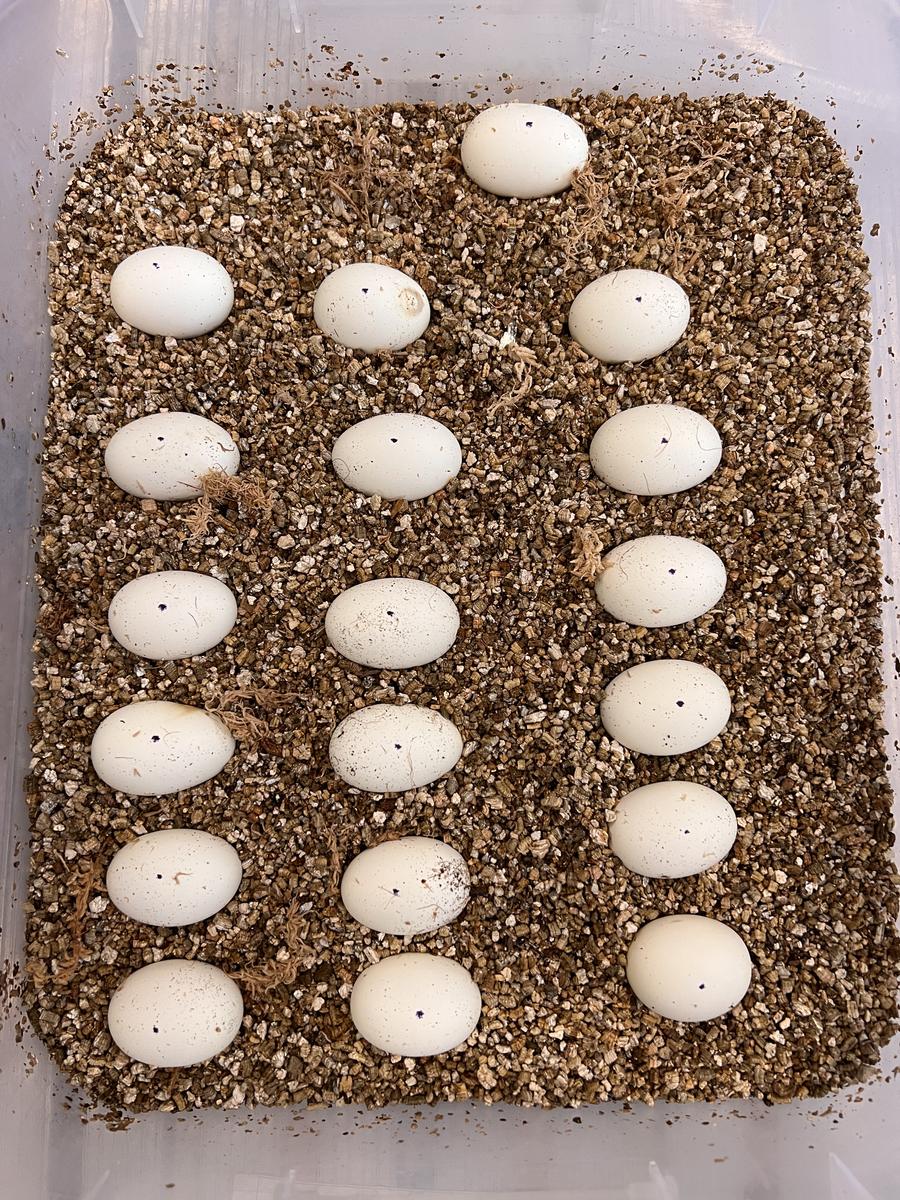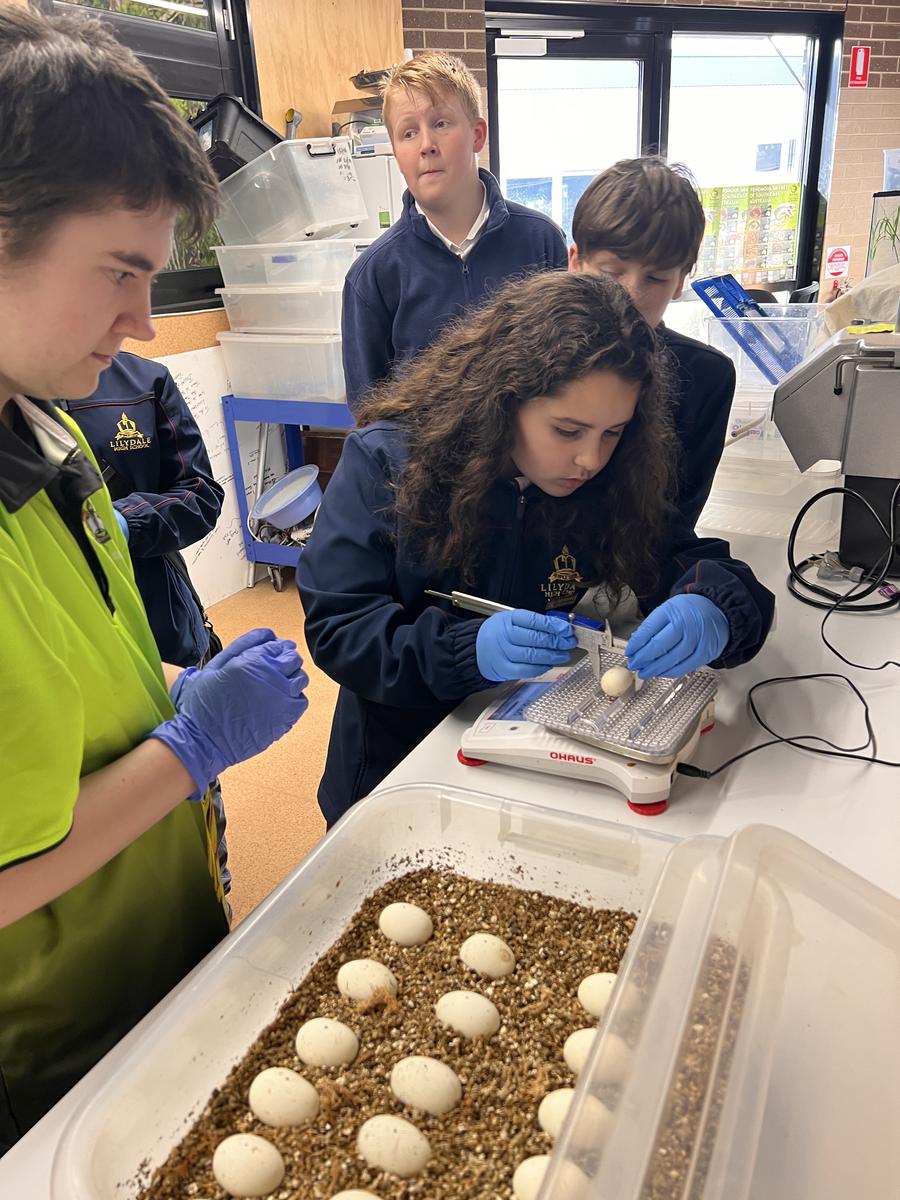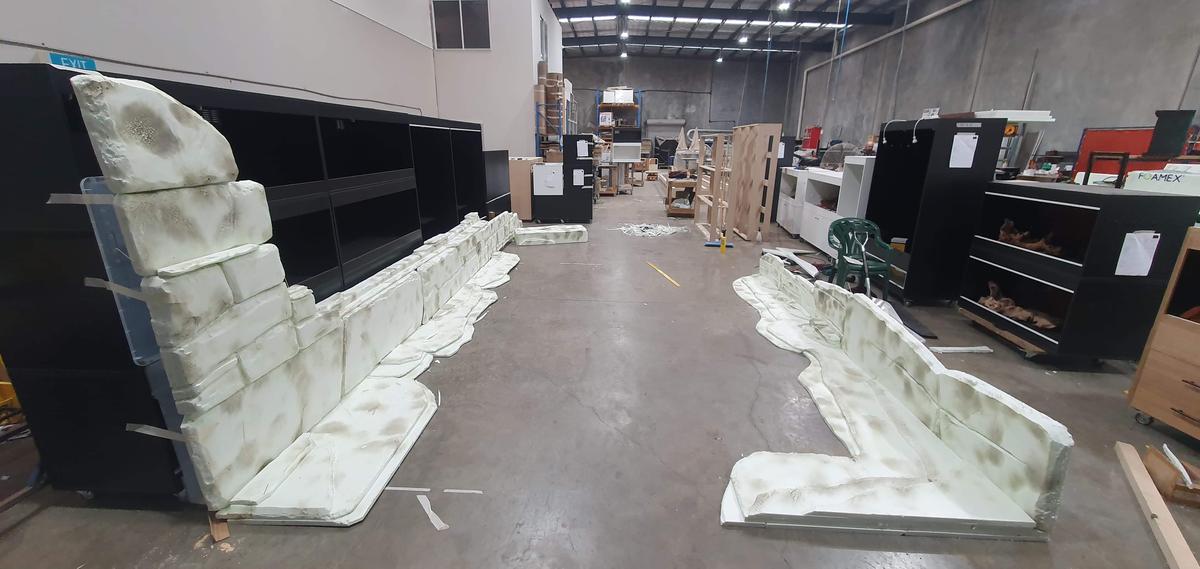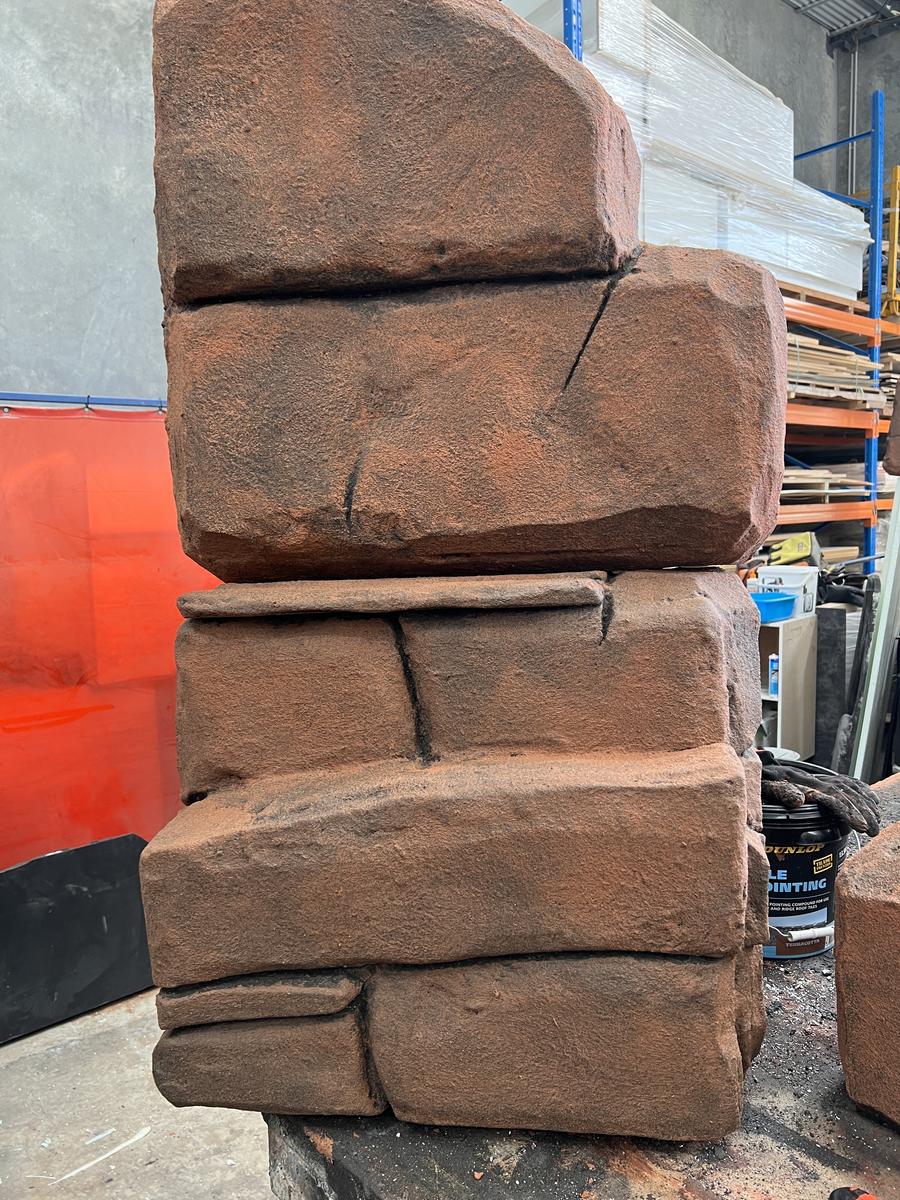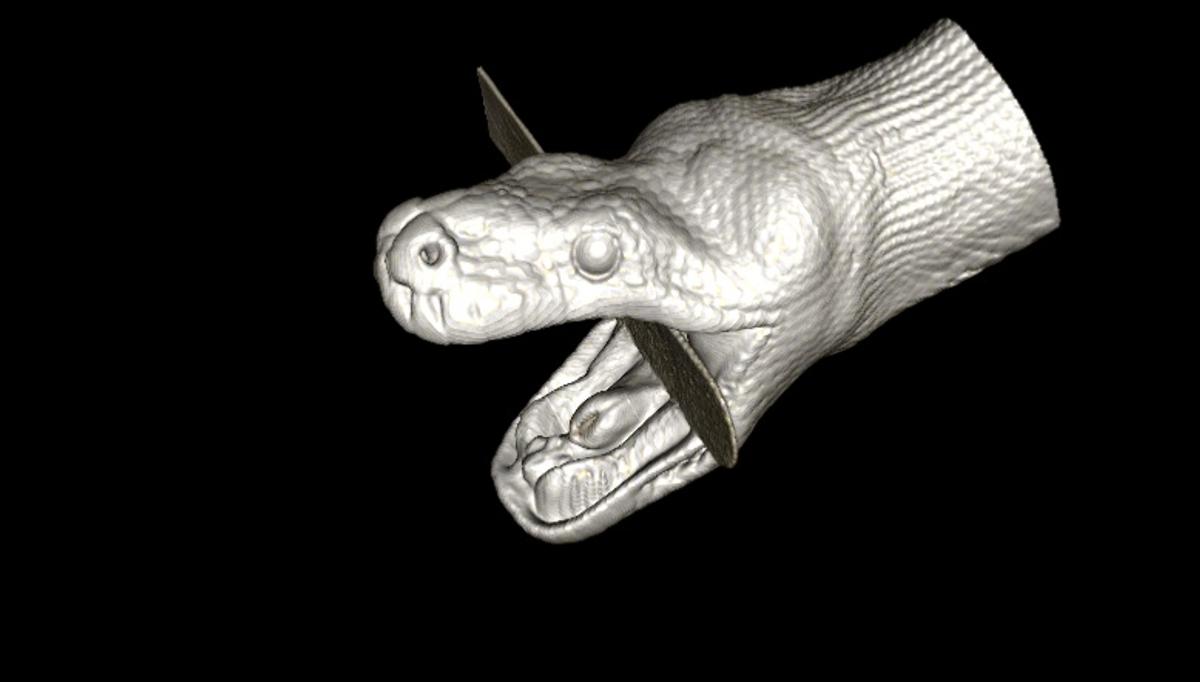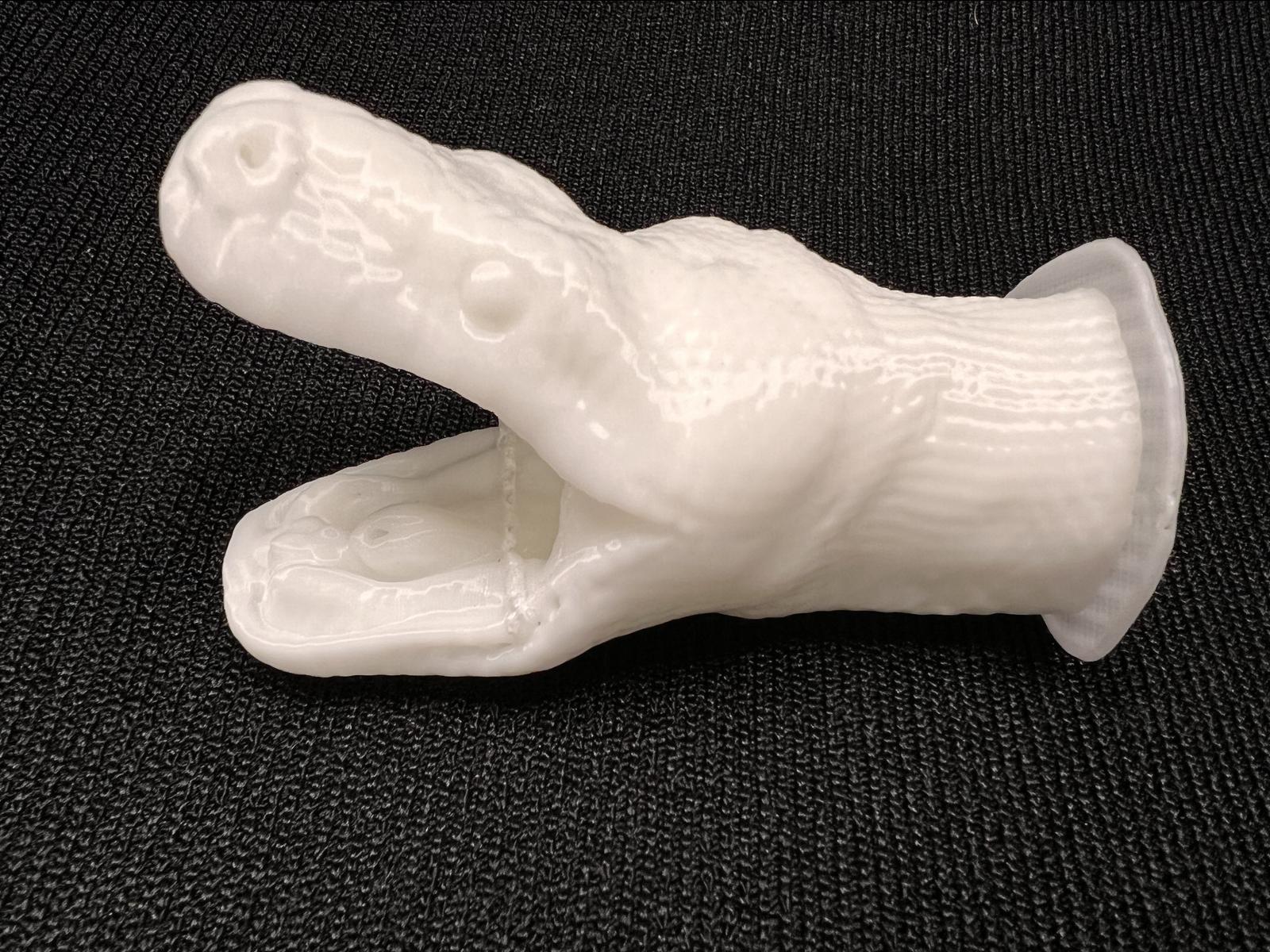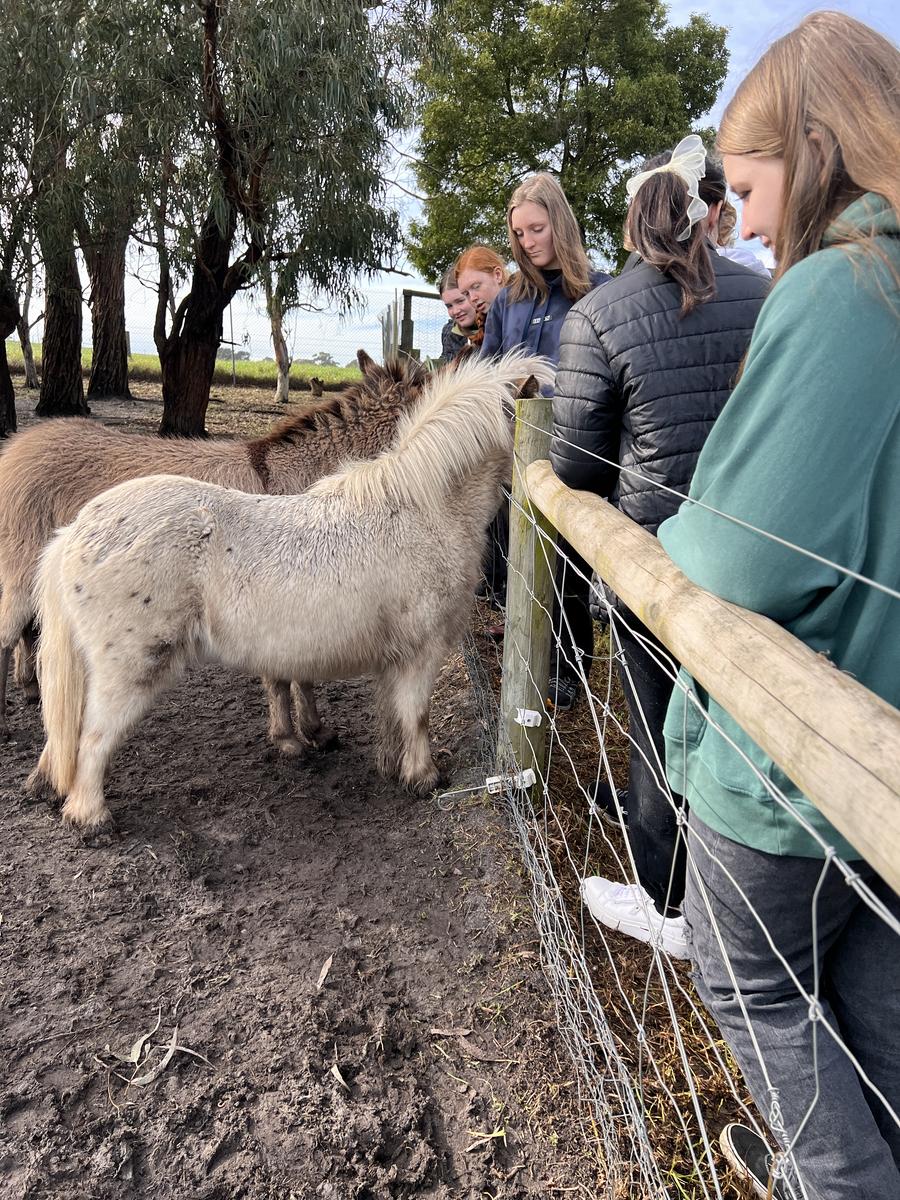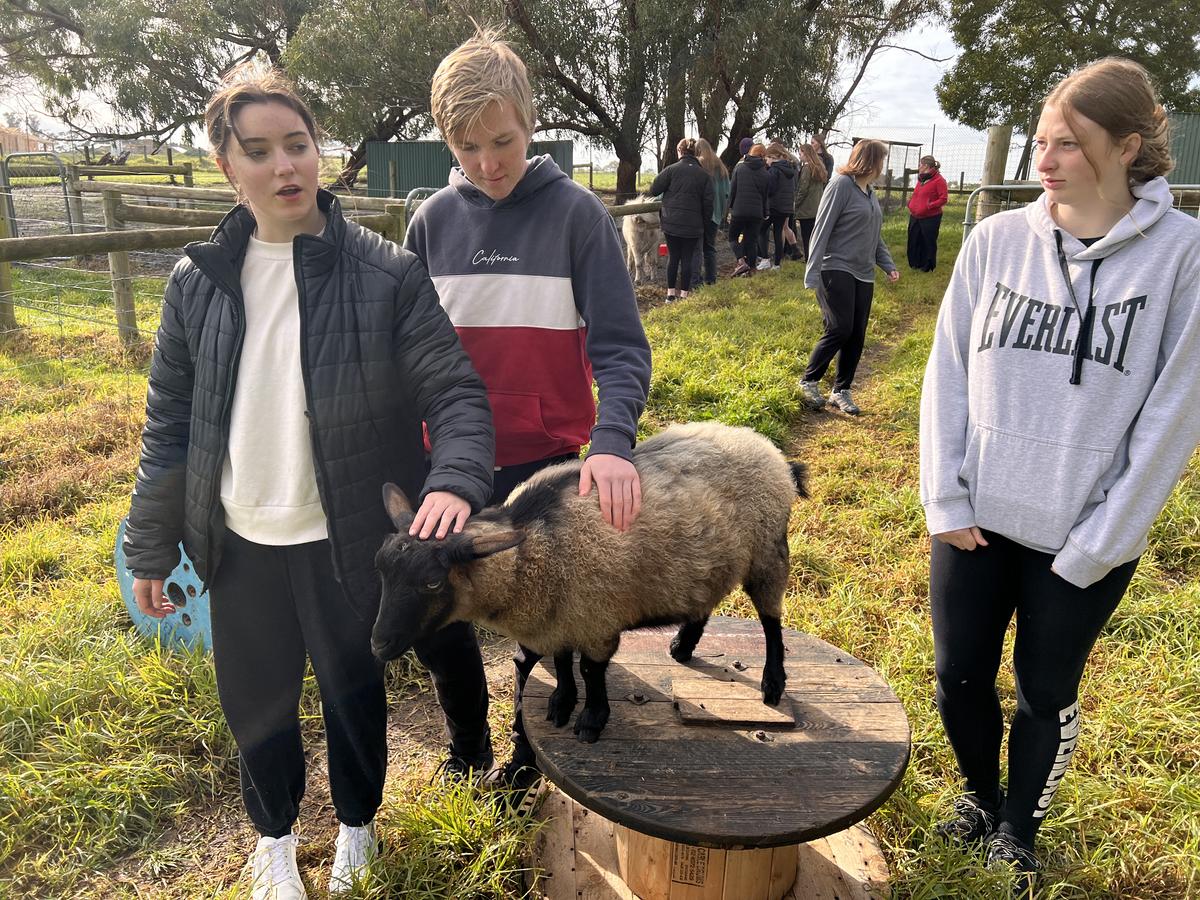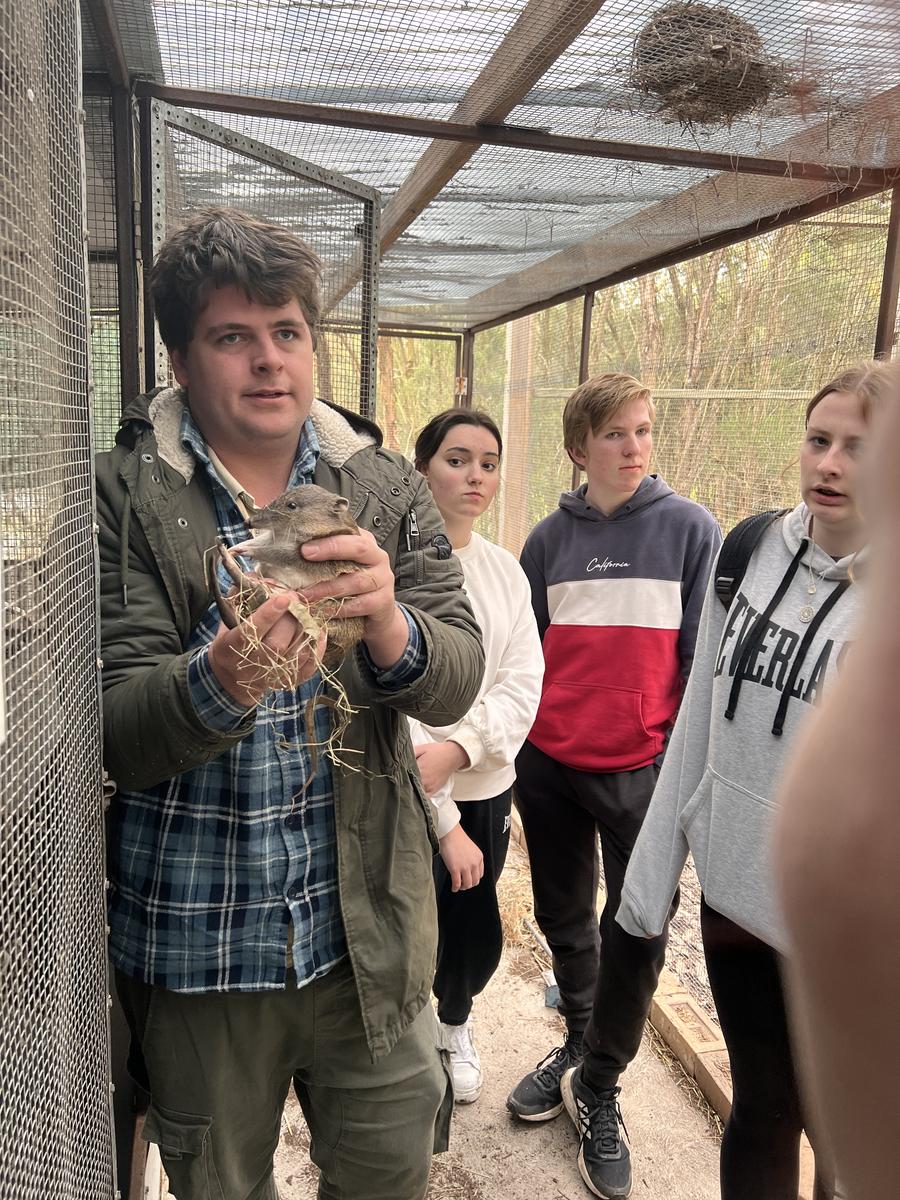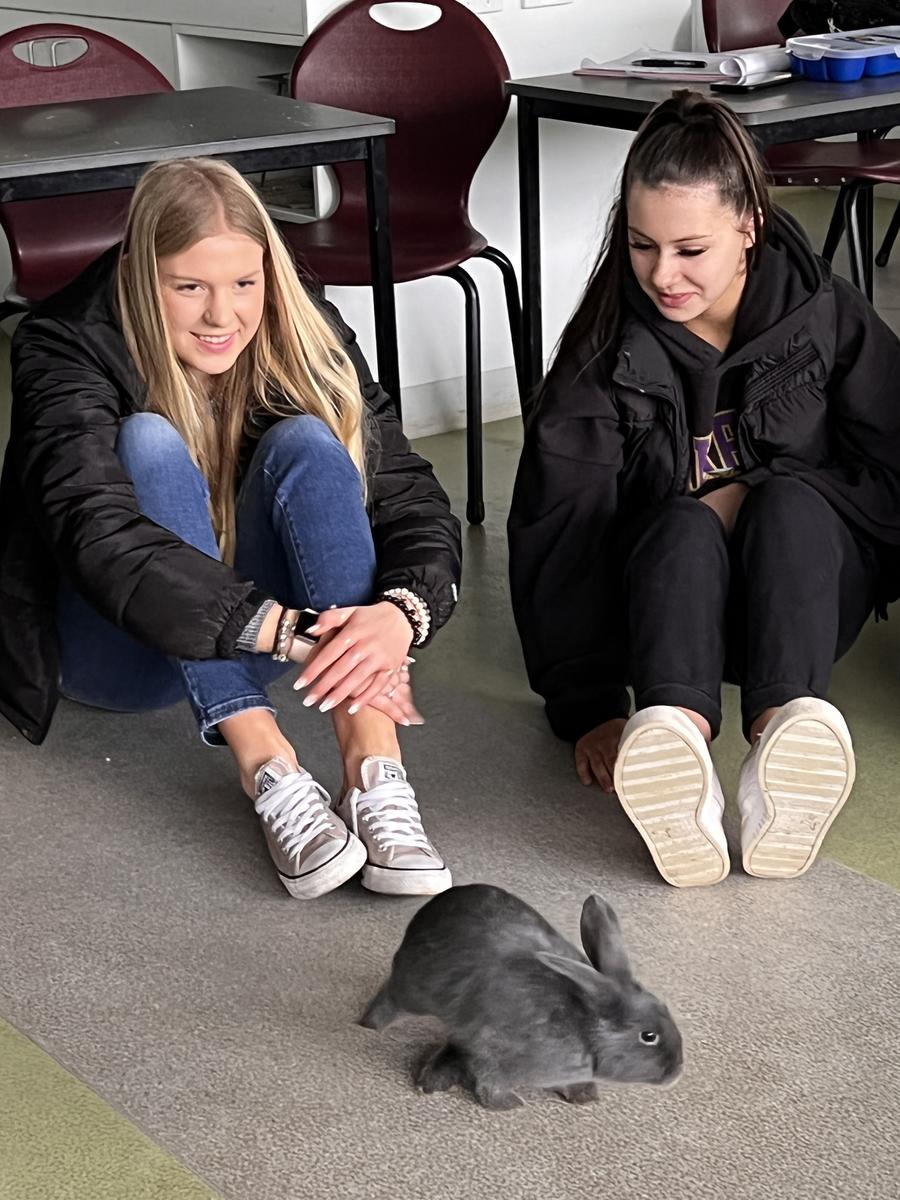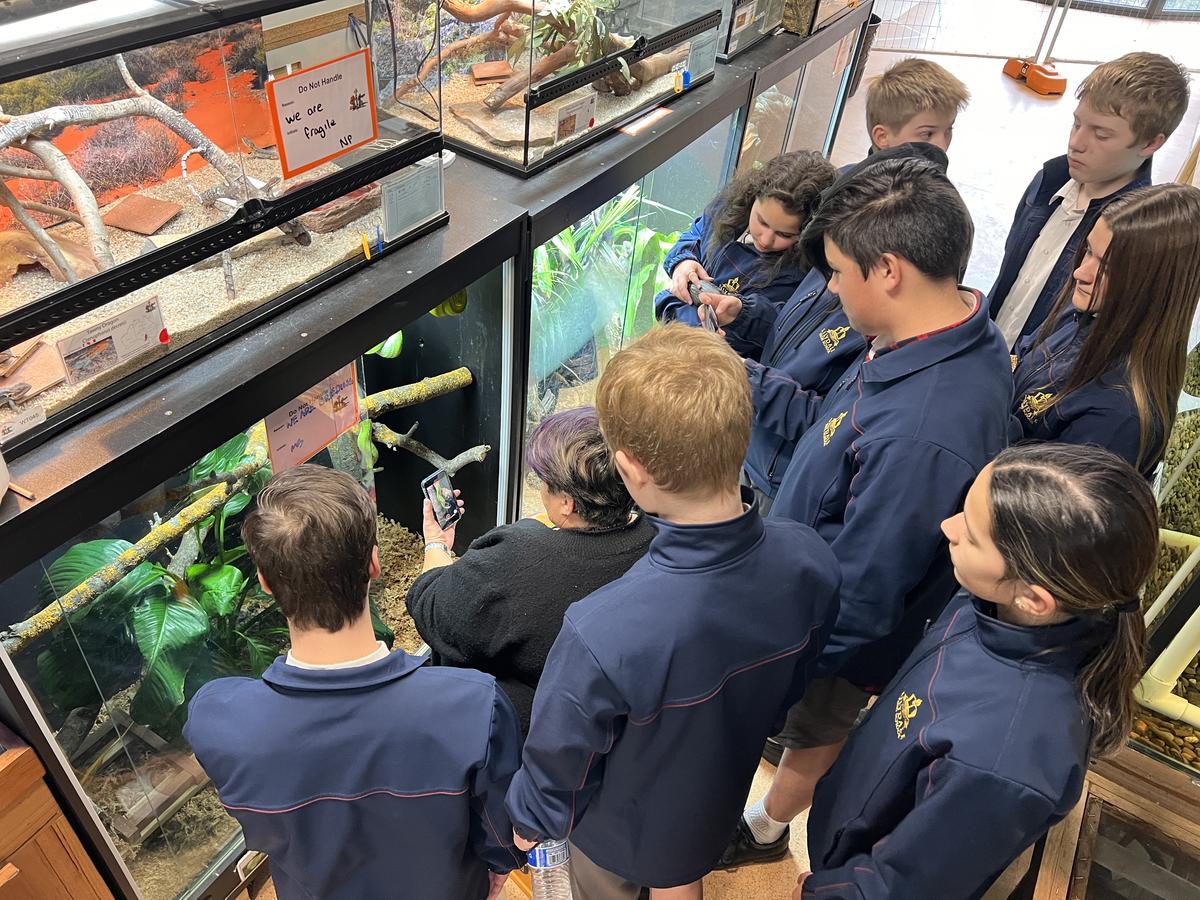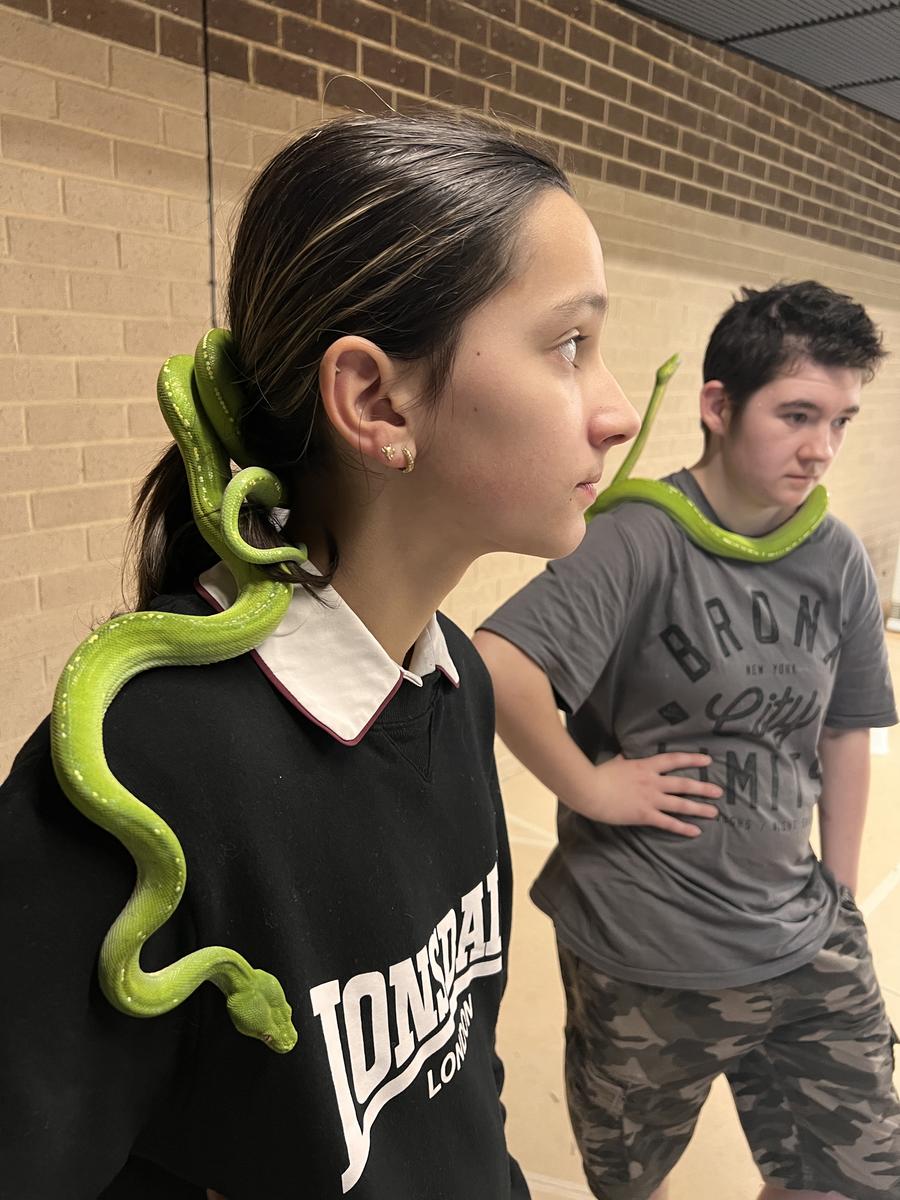
ZOOLOGY CENTRE
Fury Friends and New Enclosure Progress
It’s been an exciting couple of weeks in the Zoology Centre! With spring just around the corner, the animals are starting to become more active after their winter cooling period and some of our northern species have already laid their eggs. We were excited to get our first crocodile eggs from Cleo, however, these were laid in her temporary off site exhibit and in the water, so they are not likely to be viable.
We also had 19 Green Python eggs laid and conveniently Teresa, the mother timed it perfectly for the students to watch her lay the eggs, an experience most people never get to see live.
The students also had the opportunity to partake in the process of setting up the eggs for artificial incubation and collecting data such as egg weights and dimensions.
The new enclosures for the Zoology Centre are slowly being constructed with the first four almost complete and ready to be installed in the coming week.
The mock rock work for the crocodile enclosure is also almost complete and should be installed in the coming week also, which means Leo and Cleo will be able to return to the Zoology Centre in the coming weeks.
We have recently been in discussions with Unusual Pet Vets about the possibilities of using technology to enhance student learning around technology, but also animal anatomy. This has led to our STEAM leader, Sally Stepniewski, getting involved and looking at ways we can convert 3D images taken on CT scan and converting these to a file that can be used to 3D print that image.
The results of the first attempt are amazing and opens up the possibility for further collaboration between the students and the Veterinary Clinic.
The VET Animal Studies students visited the Brian Henderson Wildlife Reserve at Woodleigh School’s Senior Campus, giving students the opportunity to spend some time with the Agriculture animals including; goats, sheep, chickens and ponies as well as doing some work in the Wildlife reserve.
They were lucky enough to see Red Neck Rock Wallabies, Brush Tailed Rock Wallabies, Swamp Wallabies, Eastern Grey Kangaroos, Bandicoots and Emus.
The students also assisted in food preparation, enhancing enclosures and weeding in key areas of the reserve to remove noxious weeds.
The VET Animal Studies students who are currently learning about feeding and watering animals in captivity and the care of mammals in captivity, had the opportunity to meet a few bunnies when we were visited by Bluey’s Bunny Shelter.
As part of the visit, Narelle, our Zoology Coordinator and specialist Rabbit Veterinarian was able to share with students detailed information about Rabbit diets and husbandry practices.
The After School Skinks program has been a hit with several students taking the time after school on Tuesdays and Thursdays to learn more about the animals in our collection and gain skills in areas such as, handling larger animals, setting up egg incubation boxes, determining gender in snakes and various other skills and knowledge that they chose to learn about.
Northern Leaf Tailed Gecko Saltuarius cornutus
This unusual looking gecko is nocturnal and lives in the trees, unlike other gecko’s it has clawed toes to hold on to rough bark. It is at home in the warm tropical and temperate rainforests of Far North Queensland, seen as far south as northern New South Wales.
The flattened body of the Northern Leaf Tailed Gecko, along with its amazing leaf shaped tail and unusual coloring, camouflaging itself well against the bark of the trees. They grow to 14 cm long, with over half their body being their tail! Along its body are spiny ‘horns’ that aid in giving this gecko the roughened bark like appearance, and the local name of ‘Horned Keeper of the Forest’.
Camouflage is a valuable skill as owls, rats and snakes hunt these gecko’s for food. When attacked the gecko arches their back and waves their tail, distracting the predator away from their head. If grabbed, they can shed their tail, allowing them to escape safely. Another tail is regrown broader and flatter than the original. It was observed that over 50% of adult Northern Leaf Tailed Gecko’s have shed their tail in population studies.
This species of gecko lays soft shelled (parchment shelled) eggs. In its wet warm tropical environment, this soft shell allows water to permeate through to the growing embryo. Interestingly this species has communal nests, although a single female lays only one or two eggs at a time. Nests have been found with up to 14 eggs from many different females.
Keeper Profile
Name: Savannah Butera
Year 7: Age13 (in less than a month)
How long have you been a keeper in the Zoology Centre / Reptile House?
7 months.
Which animal or animals do you enjoy working with the most and why?
I like the geckos the most because they’re small and they don’t bite (unless it’s the Cave Gecko). Geckos also fascinate me because of their unique features. This includes their extremely sticky feet pads which give them the ability to cling to most surfaces. The interesting thing about this is, that their feet aren’t actually covered with mucous or goo, but tiny hairs that provide friction/attraction to surfaces through a phenomenon called van der Walls forces.
What has been one of your most memorable moments in the Zoology Centre / Reptile House?
My most memorable experience has been holding a snake for the first time. The snake was Yahtzee.
What do you enjoy about being a keeper in the Reptile House?
I enjoy getting to interact with animals you generally wouldn’t be able to, if not for it being a zoo environment. I love learning about all the different species we house at the Zoology Centre, from an up close and personal perspective.
What are your aspirations for the future?
I would love to eventually become a Zoologist, specializing in gecko research.
What are you looking forward to the most when the Zoology Centre is complete?
I am looking forward to there being more space for all of the animals in our collection. Currently, some of our animals are housed outside of the Zoology Centre. It will be exciting for them to become part of the animals students interact with on a daily basis.
Why would you recommend getting involved in the Zoo Keeper Program at Lilydale High School?
I recommend getting involved in the Zoo Keeper Program because it’s a new opportunity to learn about a subject that not many high school students have exposure to.
Narelle Price and Marcus Whitby

